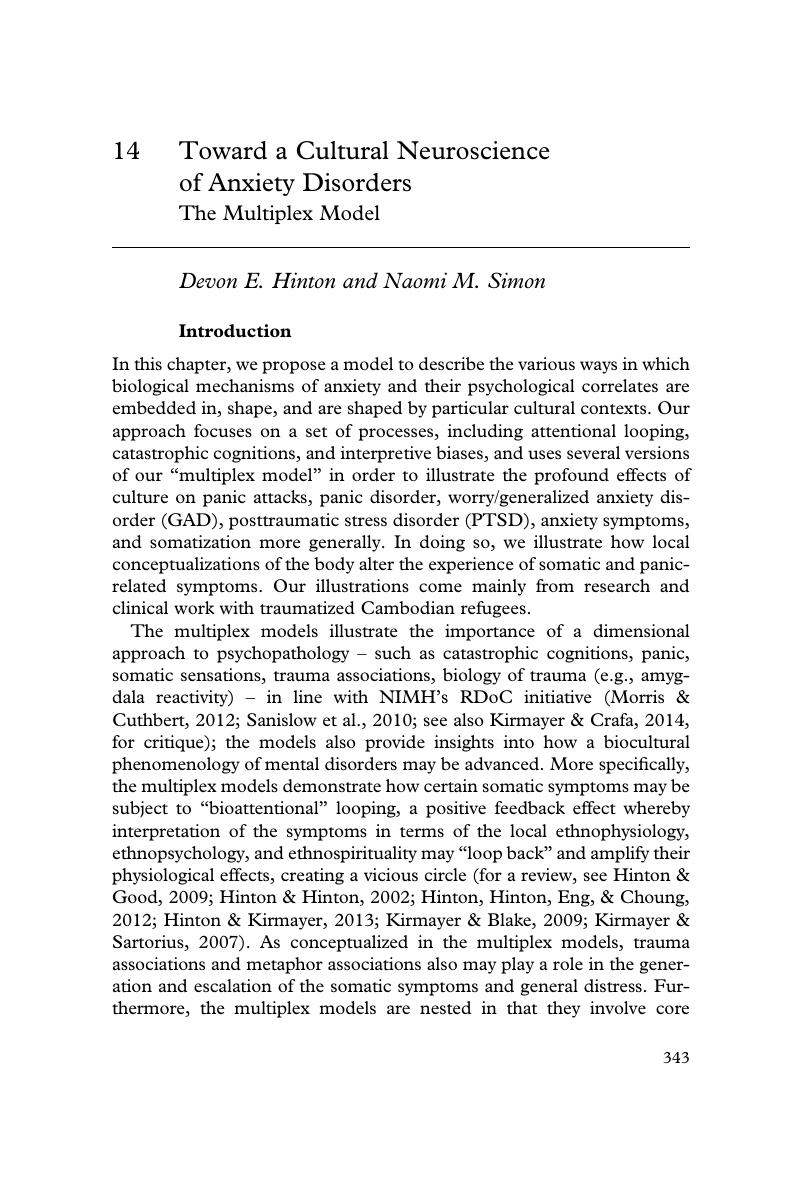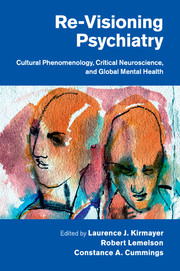Book contents
- Re-Visioning Psychiatry
- Re-Visioning Psychiatry
- Copyright page
- Dedication
- Dedication
- Contents
- Figures
- Tables
- Contributors
- Foreword
- Preface
- Glossary
- 1 Introduction: Psychiatry at a Crossroads
- Section One Restoring Phenomenology to Psychiatry
- Section Two Biosocial Mechanisms in Mental Health and Illness
- Section Three Cultural Contexts of Psychopathology
- 13 Understanding the Social Etiology of Psychosis
- 14 Toward a Cultural Neuroscience of Anxiety Disorders
- 15 From the Brain Disease Model to Ecologies of Addiction
- 16 Cultural-Clinical Psychology
- 17 Psychiatric Classification Beyond the DSM
- 18 Reflections The Virtues of Cultural Sameness
- Section Four Psychiatric Practice in Global Context
- Index
- References
14 - Toward a Cultural Neuroscience of Anxiety Disorders
The Multiplex Model
from Section Three - Cultural Contexts of Psychopathology
Published online by Cambridge University Press: 05 July 2015
- Re-Visioning Psychiatry
- Re-Visioning Psychiatry
- Copyright page
- Dedication
- Dedication
- Contents
- Figures
- Tables
- Contributors
- Foreword
- Preface
- Glossary
- 1 Introduction: Psychiatry at a Crossroads
- Section One Restoring Phenomenology to Psychiatry
- Section Two Biosocial Mechanisms in Mental Health and Illness
- Section Three Cultural Contexts of Psychopathology
- 13 Understanding the Social Etiology of Psychosis
- 14 Toward a Cultural Neuroscience of Anxiety Disorders
- 15 From the Brain Disease Model to Ecologies of Addiction
- 16 Cultural-Clinical Psychology
- 17 Psychiatric Classification Beyond the DSM
- 18 Reflections The Virtues of Cultural Sameness
- Section Four Psychiatric Practice in Global Context
- Index
- References
Summary

- Type
- Chapter
- Information
- Re-Visioning PsychiatryCultural Phenomenology, Critical Neuroscience, and Global Mental Health, pp. 343 - 374Publisher: Cambridge University PressPrint publication year: 2015
References
- 7
- Cited by

